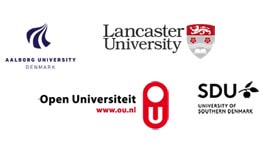

Academics’ online connections:Characterising the structure of personal networks on academic social networking sites and Twitter
Katy Jordan, Institute of Educational Technology, The Open University
Academic social networking sites (SNS), such as Academia.edu and ResearchGate, seek to bring the benefits of online social networking to academics' professional lives. Online academic social networking offers the potential to revolutionise academic publishing, foster novel collaborations, and empower academics to develop their professional identities online. However, the role that such sites play in relation to academic practice and other social media is not well understood at present.
Arguably, the defining characteristic of academic social networking sites is the connections formed between profiles (in contrast to the traditional static academic homepage, for example). The social network of connections fostered by SNSs occupies an interesting space in relation to online identity, being both an attribute of an individual and shaped by the social context they are embedded within. As such, personal network structures may reflect an expression of identity (as "public displays of connection" (Donath & boyd, 2004) or "relational self portraits[s]" (Hogan & Wellman, 2014)), while social capital has been linked to network structures (Crossley et al., 2015). Network structure may therefore have implications for the types of roles that a network can play in professional life. What types of network structures are being fostered by academic SNS and how do they relate to academics' development of an online identity?
This presentation will discuss findings from a project which has used a mixed-methods social network analysis approach to analyse academics' personal networks online. The personal networks of 55 academics (sampled from survey participants, to reflect a range of disciplines and job positions) on both one academic SNS (either Academia.edu or ResearchGate) and Twitter were collected and analysed. Differences in network structure emerged according to platform, with Twitter networks being larger and less dense, while academic SNS networks were smaller and more highly clustered. There were differences between academic SNS and Twitter in the brokerage positions occupied by the participant. The results are discussed in relation to other salient studies relating network structure in online social networks to social capital, and implications for academic practice. Future work, including co-interpretive interviews to explore the significance of network structures with participants, is introduced.
Keywords
Academic networks, Digital scholarship, Online identity, Social network analysis
Joint Organising Institutions
| Past Conference Proceedings |Call for Book Proposals| Contact |